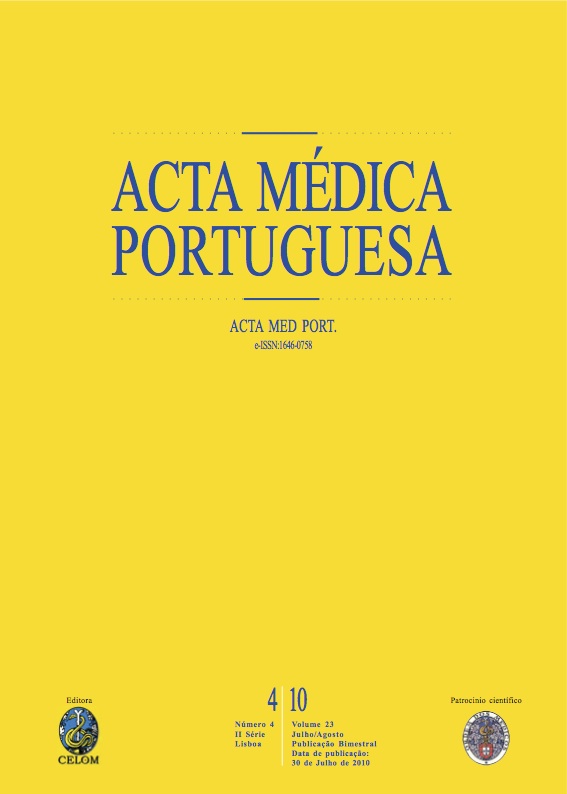Transobturator tapes for stress urinary incontinence treatment: middle-term results.
DOI:
https://doi.org/10.20344/amp.698Abstract
Minimal invasive surgical treatment of female stress urinary incontinence with suburethral transobturator tapes is completely accepted nowadays. The purpose of this study is to evaluate the efficacy and security of these suburethral tapes, comparing the outside-in to the inside-out approach.We performed a retrospective study of 298 patients with stress urinary incontinence diagnosis that were submitted to transobturator surgery between 2003 and 2006. From these patients 113 women underwent outside-in approach and 185 patients had inside-out approach.The mean-age of the patients was 57.2 +/- 10.3 years-old and 69.1% were in the post-menopausal period. Mean parity was 2.2 +/- 1.1. The outside-in approach was performed more frequently in association with other(s) pelvic floor surgery(ies) (83.2% versus 37.8% for the inside-out technique). The mean follow-up duration was of 14.35 +/- 13.75 months in those patients who had a transobturator outside-in technique and of 11.79 +/- 10.39 months in the inside-out group. In respect to the efficacy, results were identical in the two groups with cure and cure or improvement rates respectively of 76.9% and 92.9% in the outside-in group and of 82.7% and 93.5% in the inside-out group (differences not significative). Regarding mean procedure duration, when it was performed isolated, we had a significant lower duration in patients submitted to inside-out technique (14.77 +/- 5.37 minutes versus 21.21 +/- 7.48 minutes, p < 0.05). The post-operative rates of de novo urge incontinence and mesh erosions were identical in the two groups, however microporous tapes had more erosions than macroporous ones (p < 0.05).The transobturator suburethral tapes are effective and safe for the stress urinary incontinence treatment. We had elevated cure and improvement rates with no significant differences in regard to performed procedure. The inside-out technique is significantly associated to a lower operative duration.Downloads
Downloads
How to Cite
Issue
Section
License
All the articles published in the AMP are open access and comply with the requirements of funding agencies or academic institutions. The AMP is governed by the terms of the Creative Commons ‘Attribution – Non-Commercial Use - (CC-BY-NC)’ license, regarding the use by third parties.
It is the author’s responsibility to obtain approval for the reproduction of figures, tables, etc. from other publications.
Upon acceptance of an article for publication, the authors will be asked to complete the ICMJE “Copyright Liability and Copyright Sharing Statement “(http://www.actamedicaportuguesa.com/info/AMP-NormasPublicacao.pdf) and the “Declaration of Potential Conflicts of Interest” (http:// www.icmje.org/conflicts-of-interest). An e-mail will be sent to the corresponding author to acknowledge receipt of the manuscript.
After publication, the authors are authorised to make their articles available in repositories of their institutions of origin, as long as they always mention where they were published and according to the Creative Commons license.









